Uluru - Our Journey to Australia's Red, No, Green Center
![]()
One morning, back in Melbourne, we were planning the rest of our travels in Australia. Blair said "We really must go to Uluru!"
"But it's SO far and we hadn't planned to go there. We're urbanists, we visit cities!", Susan responded.
So we talked for a while and we both realized that he was right. Uluru (Ayers Rock) and the surrounding 'Red Center' or 'Outback' is the essence of Australia and a 'must see' for most every visitor. We began to research how to do it.
Australia, as large as the continental USA, was settled along its coasts, particularly along the south and east coasts, leaving the vast arid lands of the center mostly uninhabited. Yet, Uluru, a giant monolithic rock that rises from this vast, dry, red tableland, has become the iconic image of Australia.
Our plan to visit evolved, taking into account the vast distances involved and lack of public transit. We decided to sign up for two tours instead of our usual indie travel mode. We flew from Adelaide to Alice Springs, the town at the geographic center of the continent where most visitors base their visit. The aerial views as we approached were anything but red and arid; instead we viewed a landscape of verdant green, very different from the usual, due to the abundant rains that had fallen in recent months.
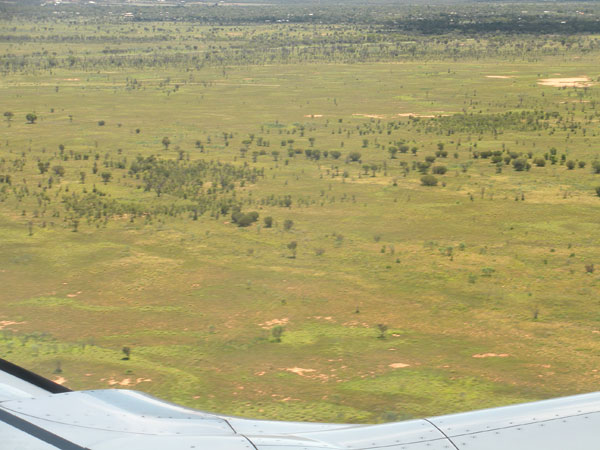
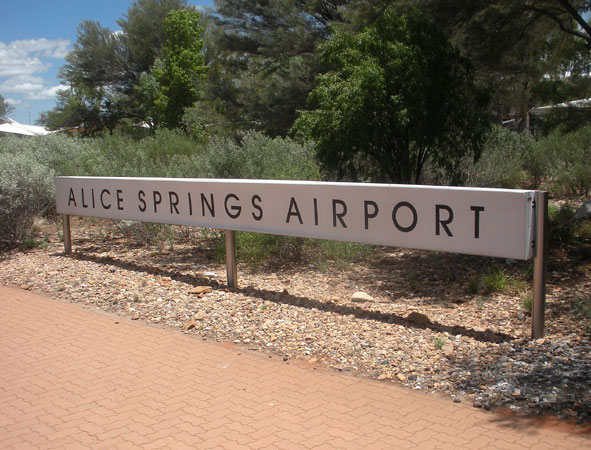
To begin our exploration, we joined a small tour to spend a day riding and hiking in the West MacDonnell Ranges just to the west of town. These parallel ridges occurred 350 million years ago, rising up from the seabed of a great inland sea. Over many years, folding, faulting and erosion shaped the ranges, creating spectacular gaps and gorges, revealing layers of ochre clays and fossils of sea creatures.
As we rode west of town through a wide valley, the ridges rose on both sides.
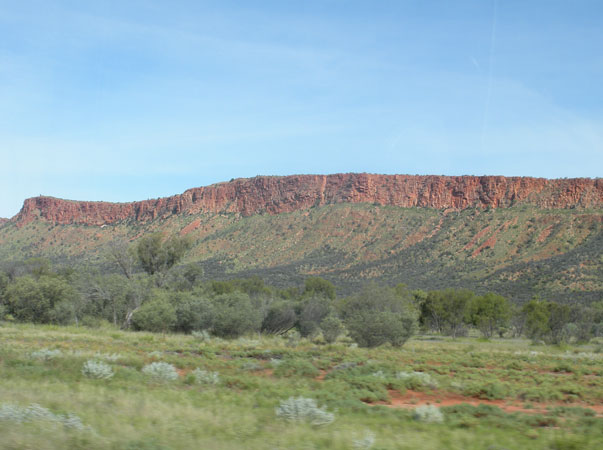
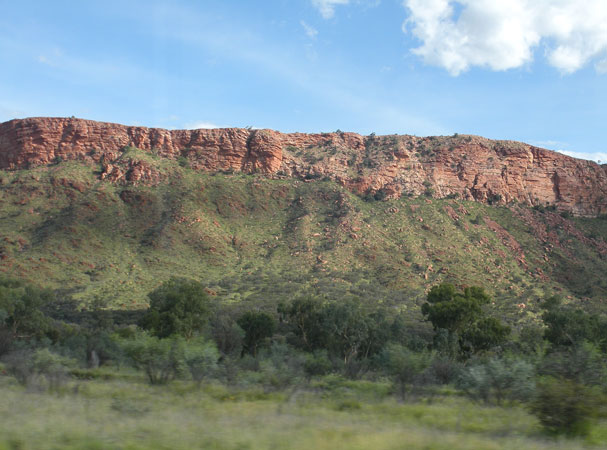
The first stop was Simson's Gap where we walked between towering rock walls along a stream lined with grasses and xeric bushes, now green from the abundant (and unusual) rainfalls that had occurred in the past month. Our guide told us that there had been more rain this summer than anyone could remember, turning the red center green!
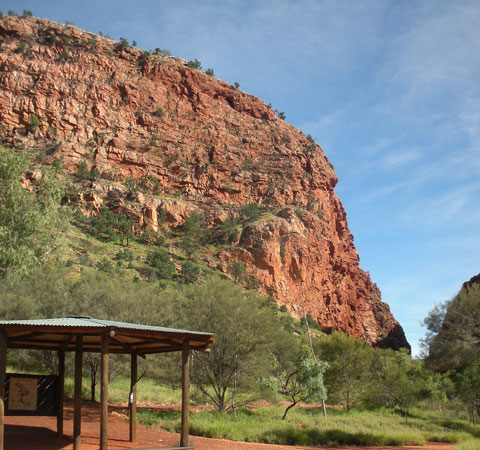
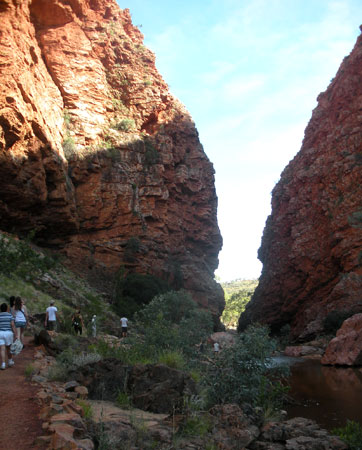
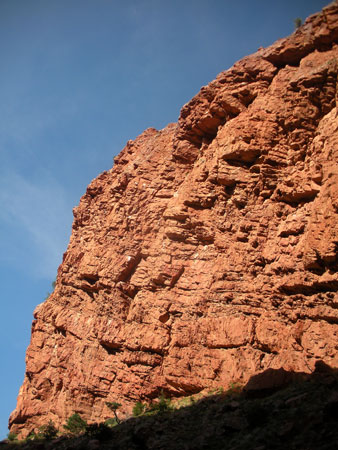
The trip continued, making stops at Standley Chasm...
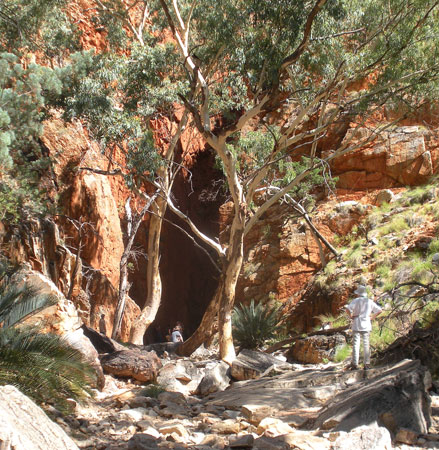
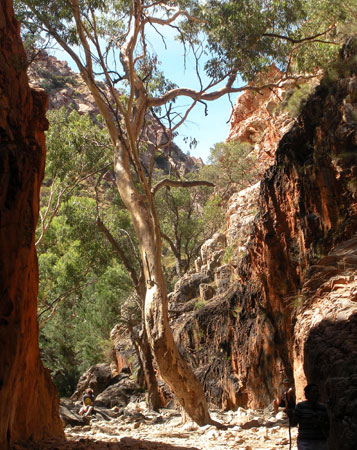
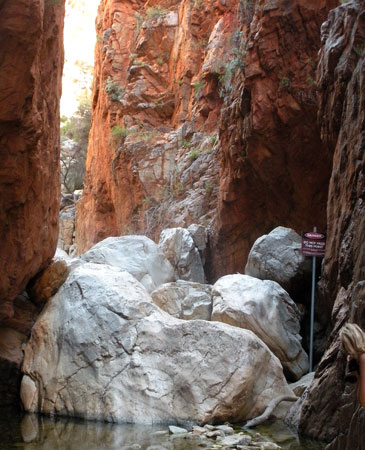
... and the Ochre Pits where clay layers provided colors for the Aborigines' body paint.
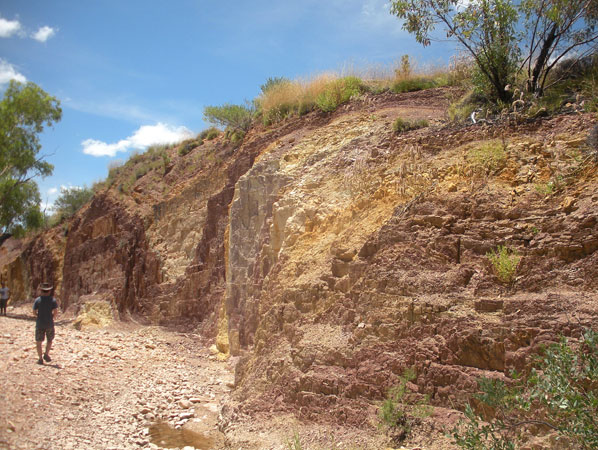
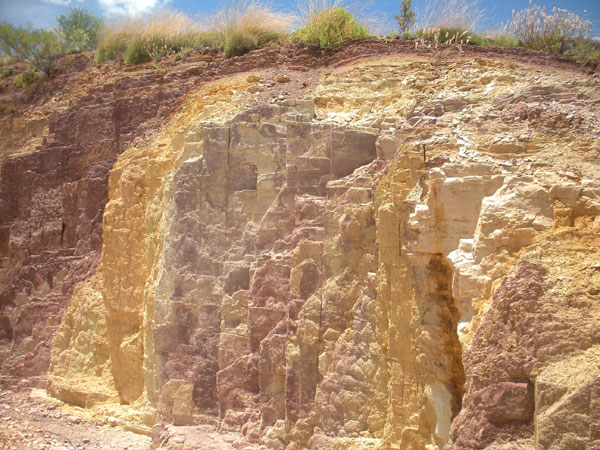
On to Ormiston Gorge where the cold water of a spring-fed pool created a desert oasis...
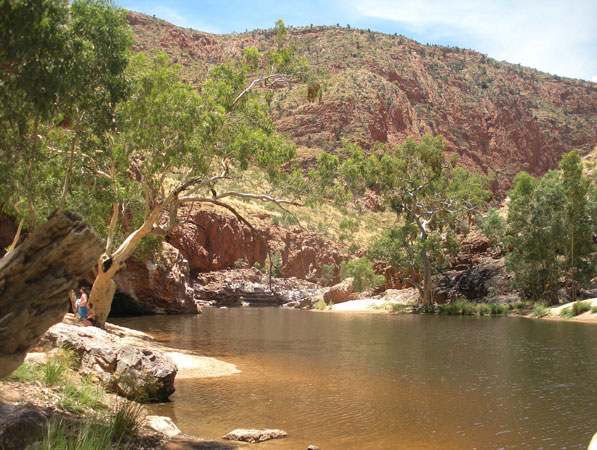
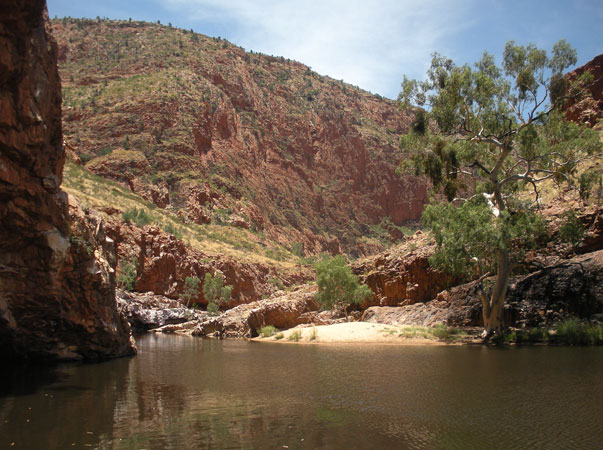
...and then Glen Helen, where the ridges split creating another watery place and great views.
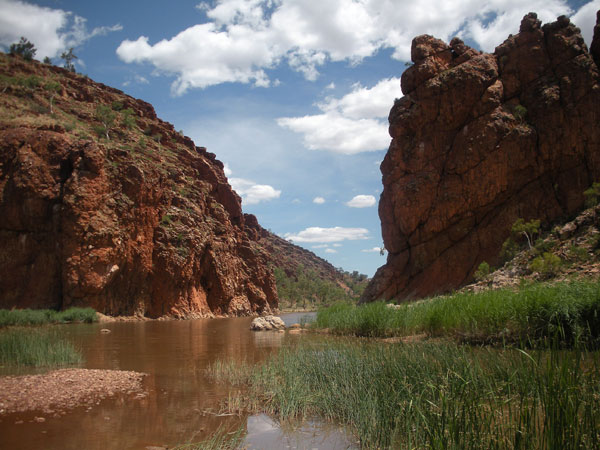
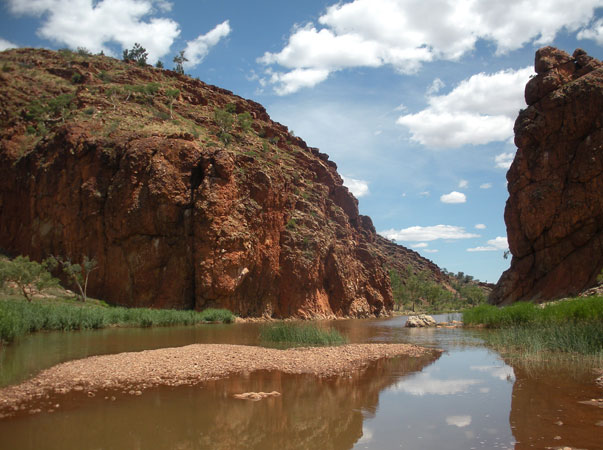
... and finally another very scenic gap, also a water hole and swimming spot for the local folks.
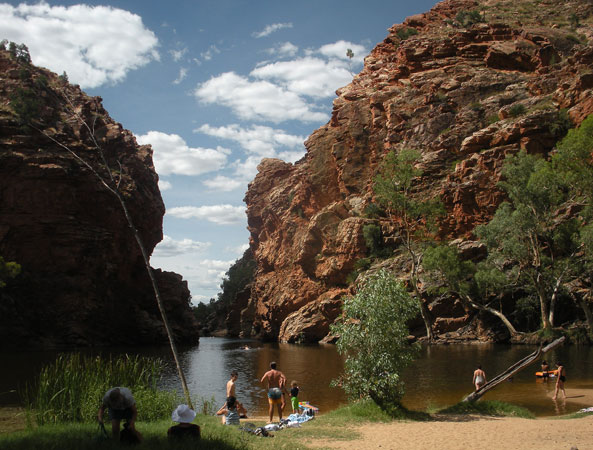
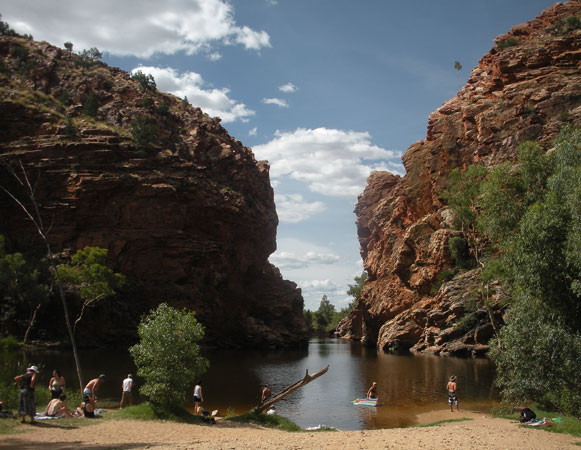
We relaxed the following day, becoming accustomed to the dry heat and organizing for the trip to Uluru, a three day, two night camping trip. Early (at 6 am) the next morning, we joined others from our hostel on a small bus, with our bags and supplies stowed in the trailer behind.
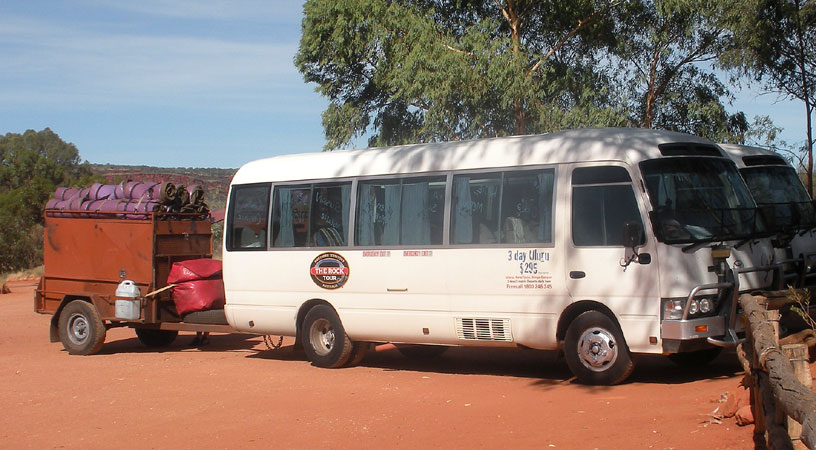
After several stops to pick up more folks, Sam, our tour guide, driver, cook and before long, our friend, headed the bus out of town south into the bush. As we traveled, each of us made our way to the front of the bus to introduce ourselves. Before long, we were all friends - Sam's Family of Europeans, a Taiwanese, three Chinese and us, the only Americans. Everyone else was under thirty, making us the elders!
The bus rolled along, past vast expanses of mostly flat land rich with grasses, bush and small trees. That's all !! No animals, wild or domestic, no buildings, no billboards, no side roads, no people. Occasionally there was another vehicle on this straight two lane highway. Midmorning, after a drive of 200km (125 miles) we arrived at a large complex, a truck stop where we stopped for a drink and fuel for the bus.
Then, back on the road until noon, when we arrived at Kings Canyon (Watarrka) National Park. Here, the flat landscape was broken by a canyon cut by an ephemeral stream, creating an oasis shaded by river red gum trees with their great white trunks and leafy boughs. The temperature approached 40oC as the group hiked around to the canyon rim while we, as wise elders, opted to walk the canyon bottom in the shade of the trees, looking up at glorious cliffs.
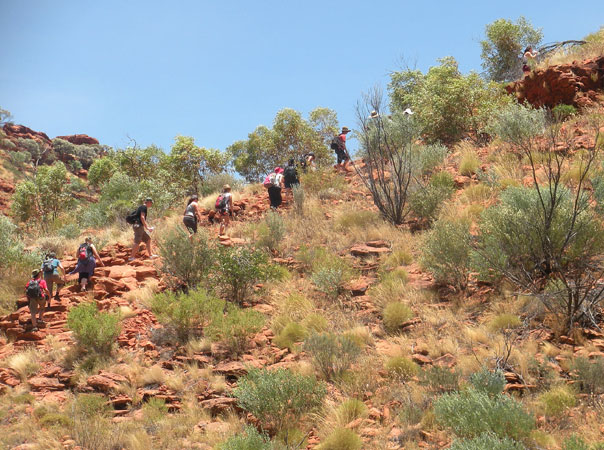
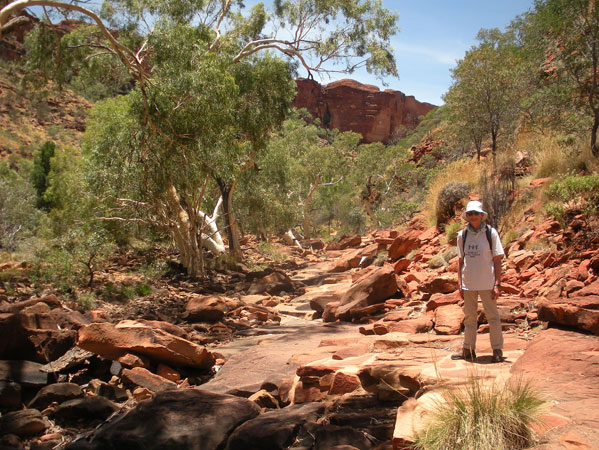
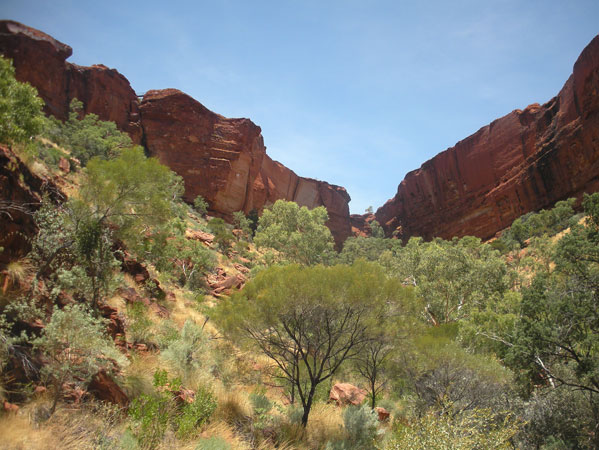
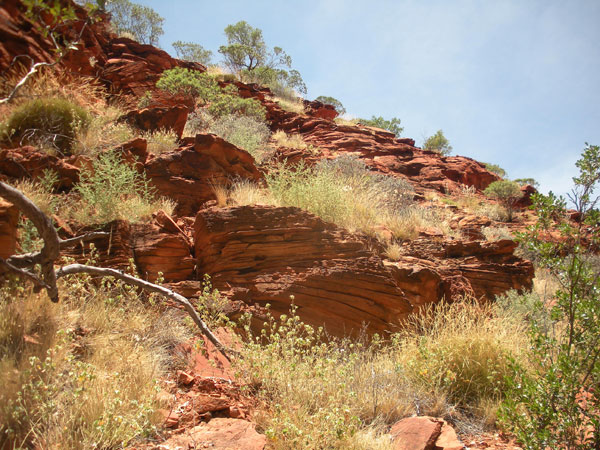
Back on the bus, with its AC struggling to cool us, we conferred on the number of beers to buy for the rest of the trip and paid into a 'kitty' so Sam could make the purchase of beer and ice at Curtin Springs, the next settlement.
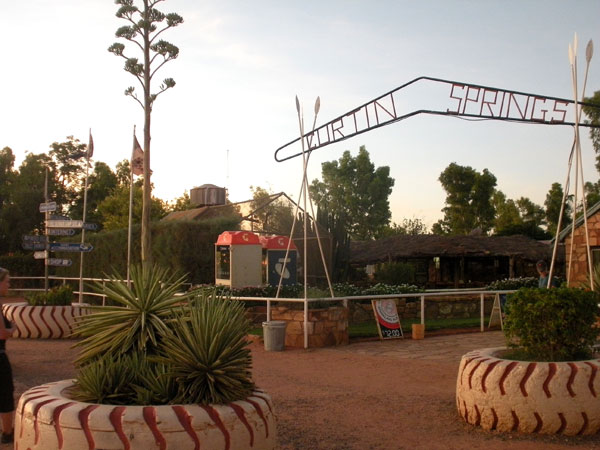
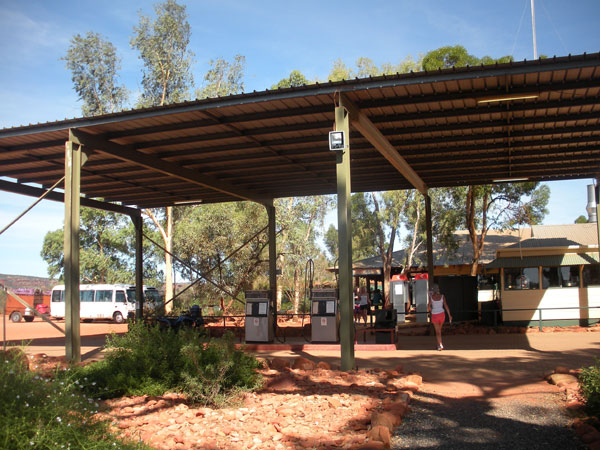
We iced down the beer in a large eskie (cooler) and continued on to a grove of mostly dead trees. Here everyone participated in firewood gathering to provide fuel for the fire that would cook the evening meal. We encountered spinifex grass, the spines of which poked us through our socks, and some encountered biting insects that raised large welts.
From here, it was a short ride to the bush camp, with a large fire pit, an outhouse and plenty of dust. Here, everyone pitched in to help. Sam built a blazing fire, while others prepared dinner, to be cooked in large pots covered with coals from the fire. The rest deployed the swags and sleeping bags. Soon we all sat on the swags, drinking the beer and gobbling the food lustily, sharing travel stories and watching the stars appear. In the still, hot air, we slept on top of our swags under a million stars.
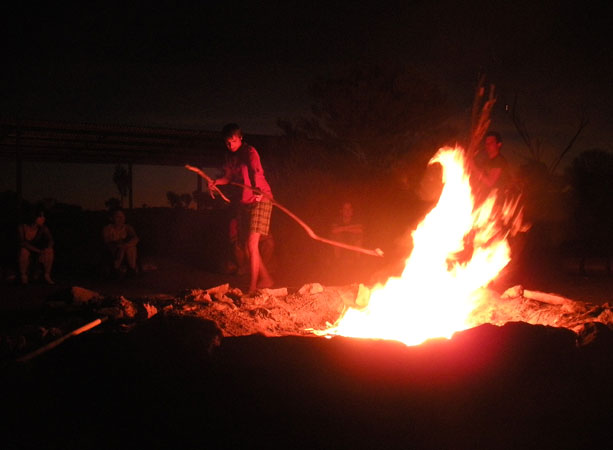
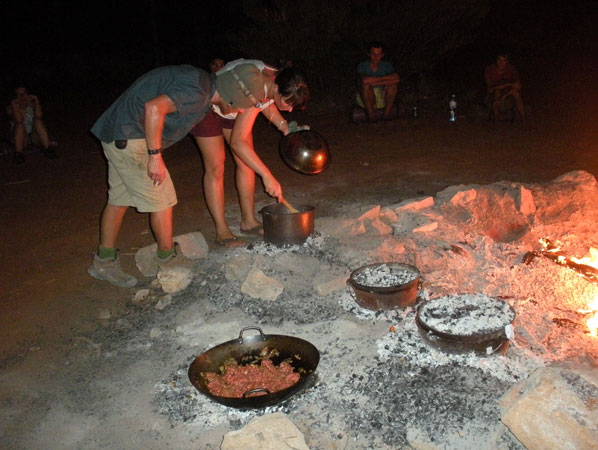
"Wakie, wakie!", Sam called in the early morning darkness. Everyone rolled his swag and sleeping bag, dressed, gathered around the brekkie table for tea, coffee, cereal and toast with jam. Back on the bus, we headed down the road but stopped abruptly while Sam changed a flat tire on our trailer.
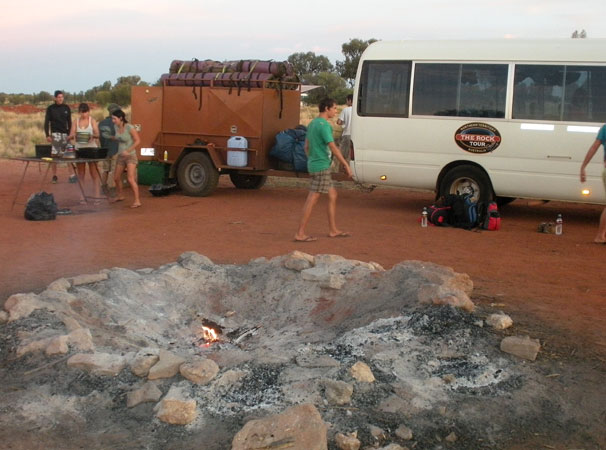
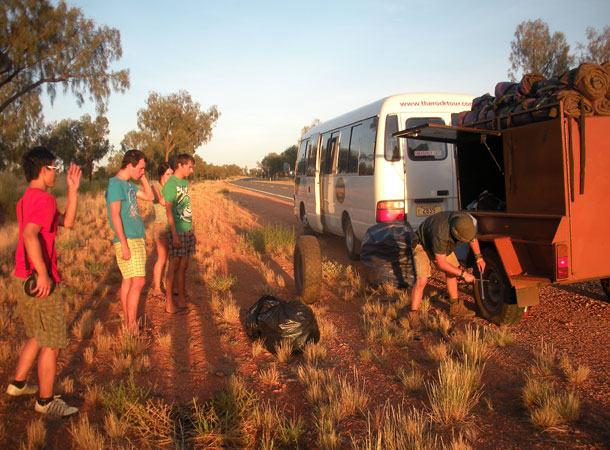
Continuing on, we soon arrived within sight of Uluru, a great hump in the flatness, growing larger and redder as we approached. We passed through the gates of the Uluru - Kata Tjuta National Park. A sign said, "Welcome to Anangu Land!"
We continued on to Kata Tjuta, the cluster of thirty-six gigantic domes of red conglomerate rock, looking like the bald and sunburned heads of giants. Here we hiked the Valley of Winds Trail among these domes where, sheltered in the spaces between them, were clusters of trees and grasses hosting flocks of tiny Zebra Finches and other colorful, singing birds.
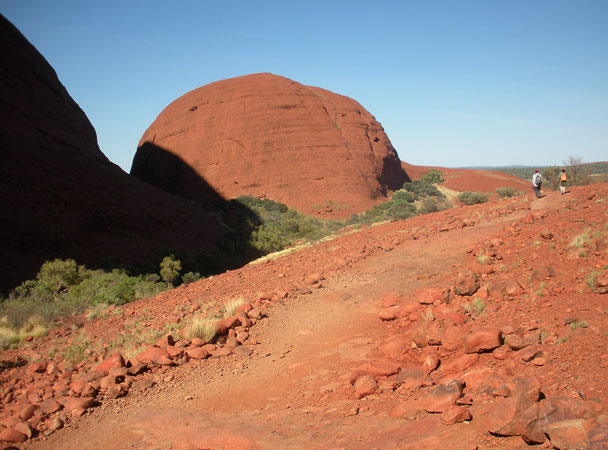
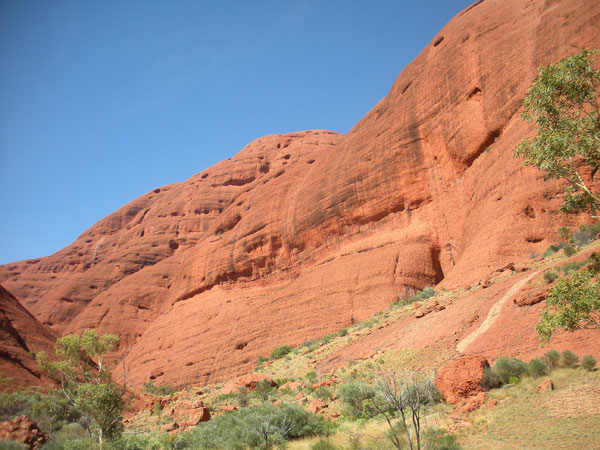
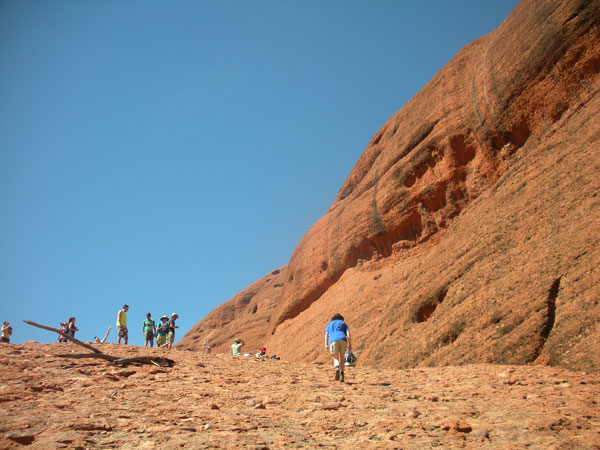
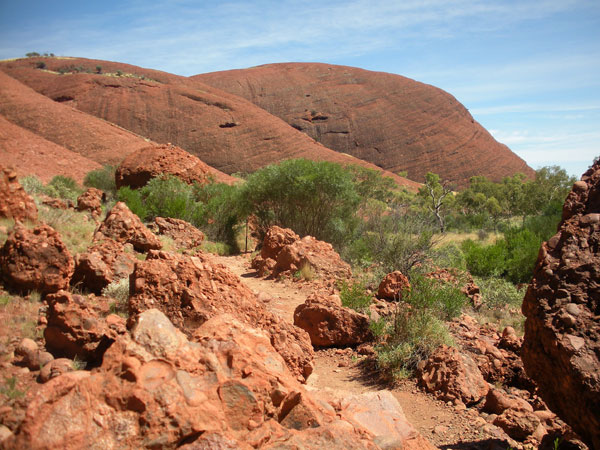
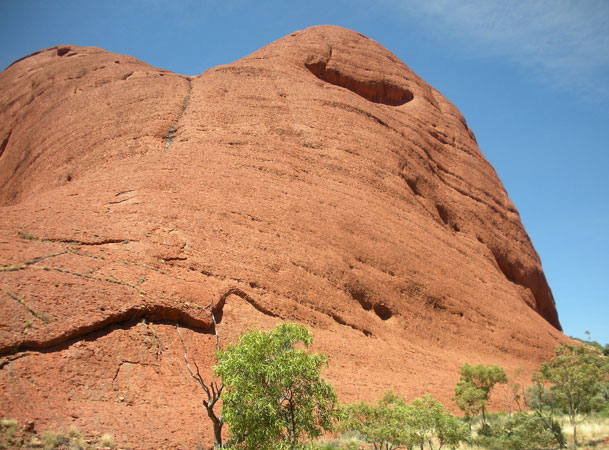
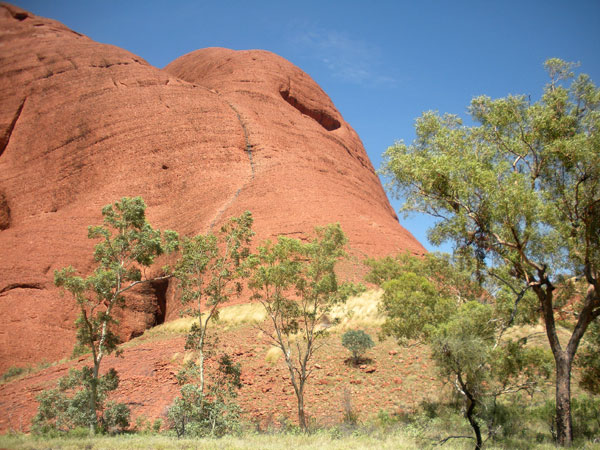
We picnicked under shady trees with views of the great red domes across the road before checking into our campsite for a brief rest and a most welcome shower. Refreshed we then continued on to the Cultural Centre to learn about the Arangu people, past and present. From here, we walked along the base of the Rock, our first 'up close and personal' encounter. Up close the Great Rock is monolithic, convoluted, striated and pock marked. The years of erosion have not been kind to him. We found ourselves filled with a strange combination of wonder, awe and fondness, thinking of this massive inanimate chunk of sandstone as "he", as if it were a great, sleeping beast.
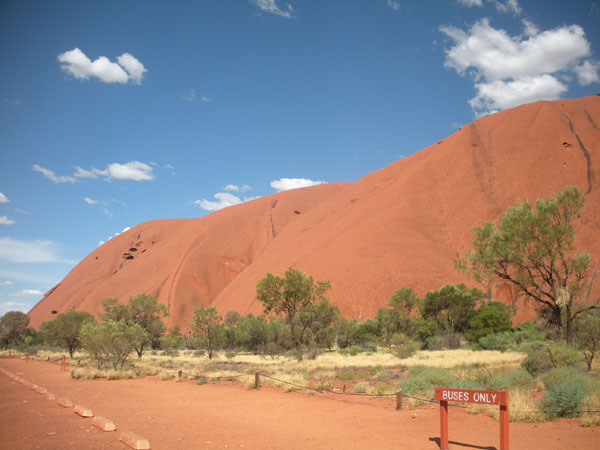
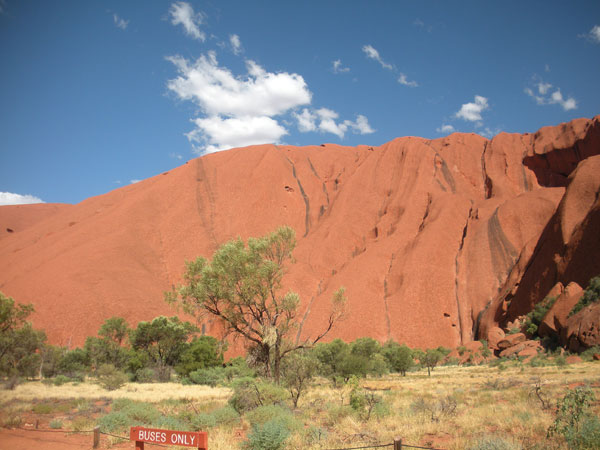
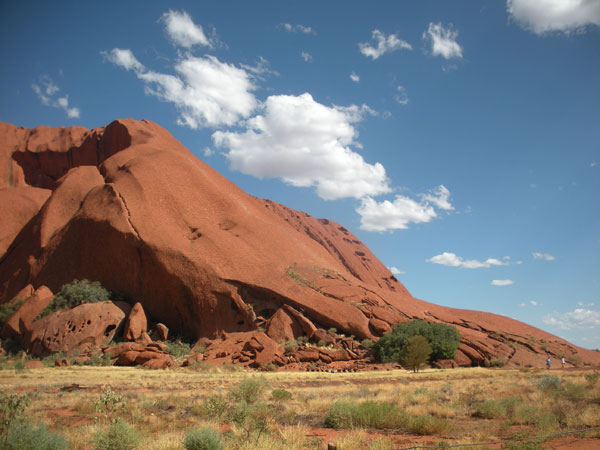
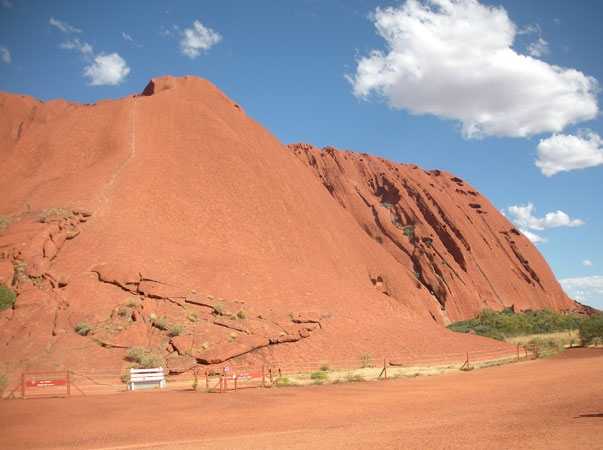
We continued past special places: caves and a water hole, while Sam told stories of the people who lived here long ago. We were beginning to feel the presence of the spirits of those former inhabitants as we looked up at Uluru's great red sloped sides.
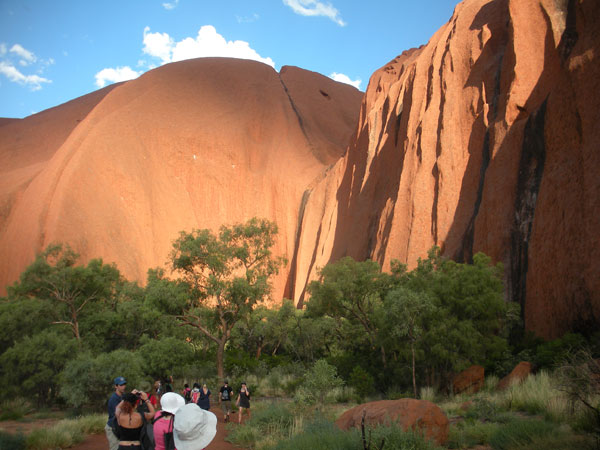
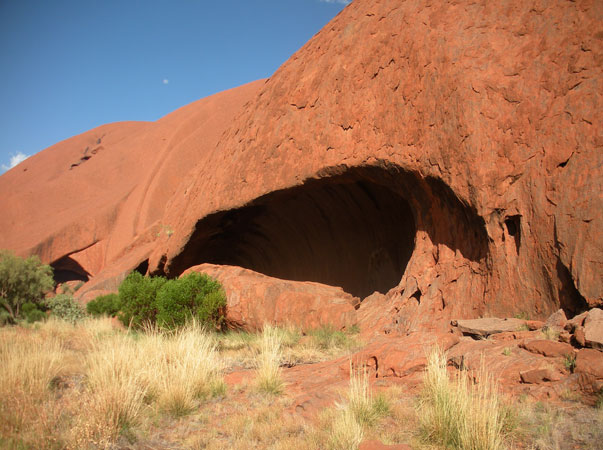
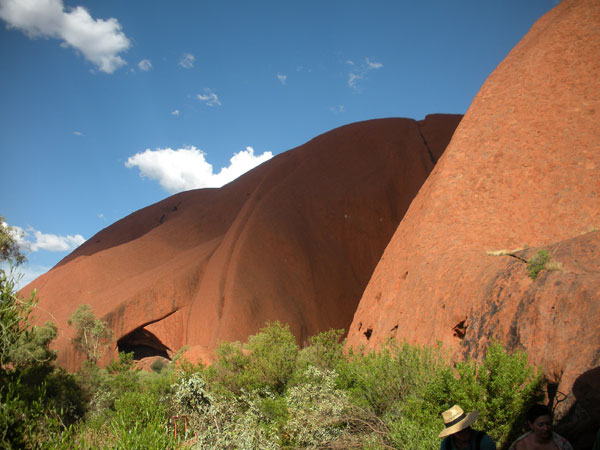
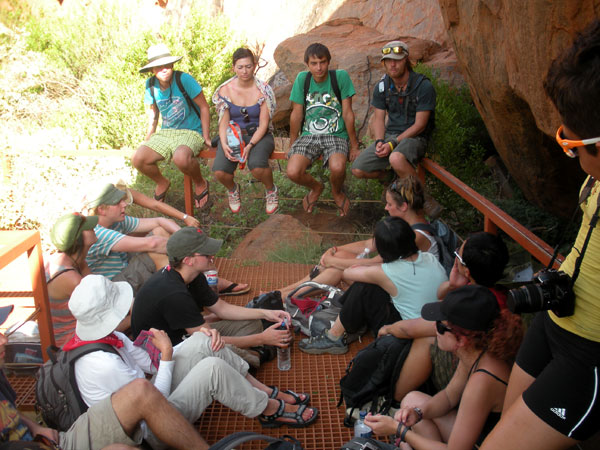
Later in the afternoon, we rode around to the Sunset Viewing Area, just far enough away to afford the classic view of Uluru as the sun set behind us. We sipped our beers and watched the changing light on the great red rock.
As we sat, watching, another bus, much larger and fancier than ours, pulled up, disgorging a crowd of chattering, champagne slugging, geezers and geezerettes who immediately began to push their way into our tranquil space. Mild mannered Blair confronted them, declaring that 'this was our space!" They retreated.
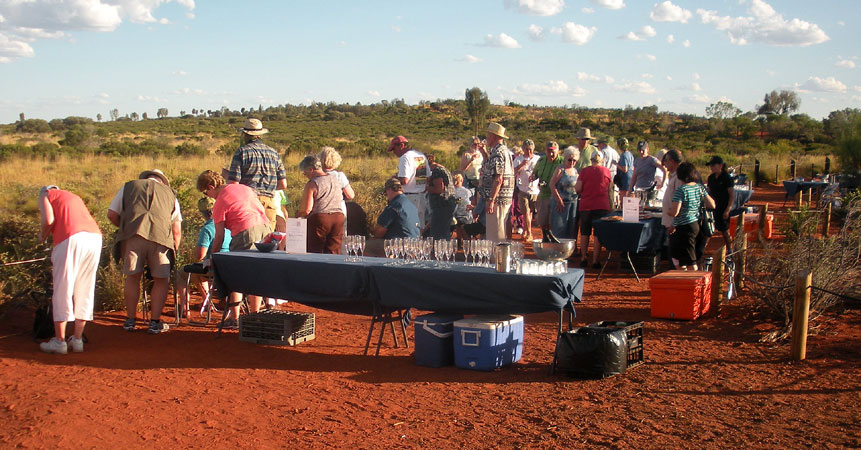
Suddenly, we were overcome with gladness that we had decided to travel with the young people, camp out, endure the heat and flies, drink beer and share firecooked communal dinners. We were thankful to have been accepted cheerfully by these wonderful young adventurers and we told them so.
As the sun set, Uluru turned from red to burnt orange to hazy purple to black.
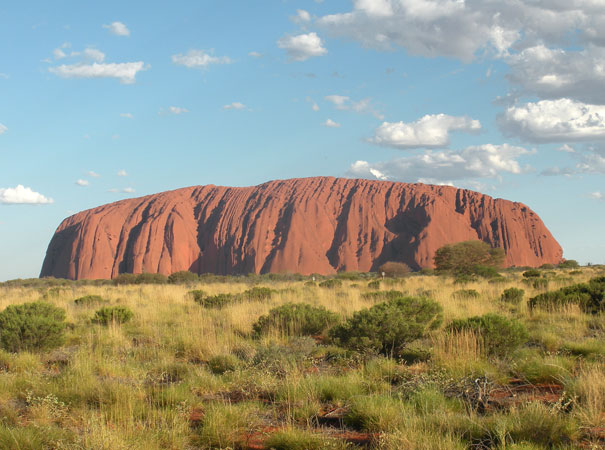
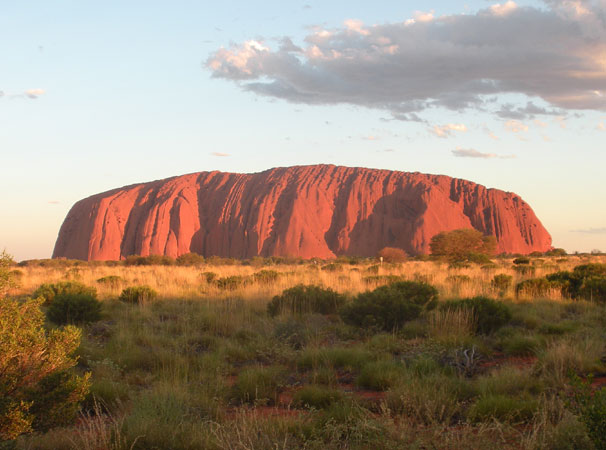
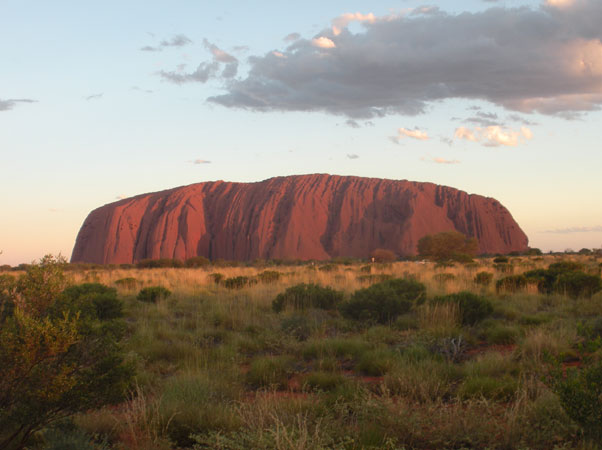
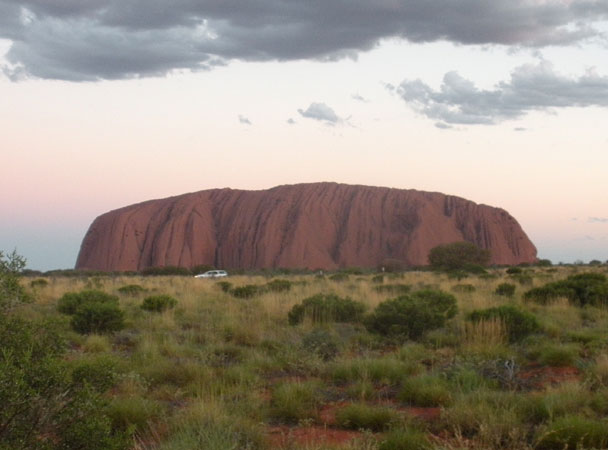
Meanwhile, the ever resourceful and energetic Sam had cooked us a lovely dinner! In the fading light, we finished off the food, took a few more glimpses of Uluru and headed back to camp. Relaxing on our swags, we watched the nearly full moon rise, then easily fell to sleep.
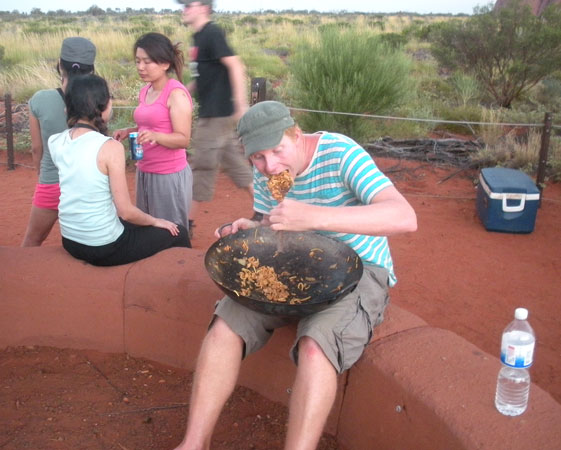
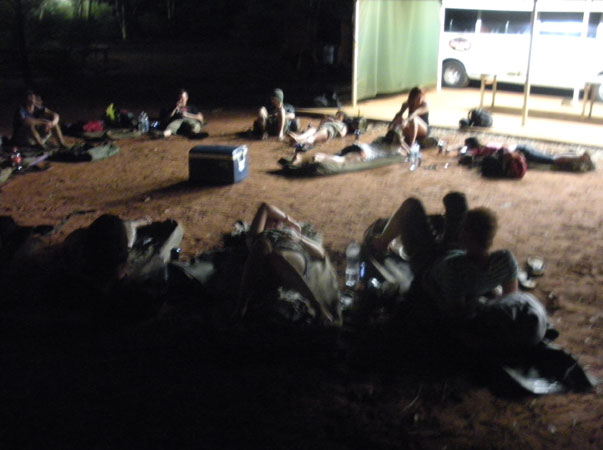
"Wakie, wakie!", Sam called. In the darkness, we again rolled up swags and sleeping bags, dressed, packed up and boarded the bus. Back to the Sunset Viewing Area, we ate brekkie and watched as dawn came, first a pink glow around Uluru, then a gradual brightening in the sky and finally the sun rose, bright and hot just behind the edge of the Rock - Bling!
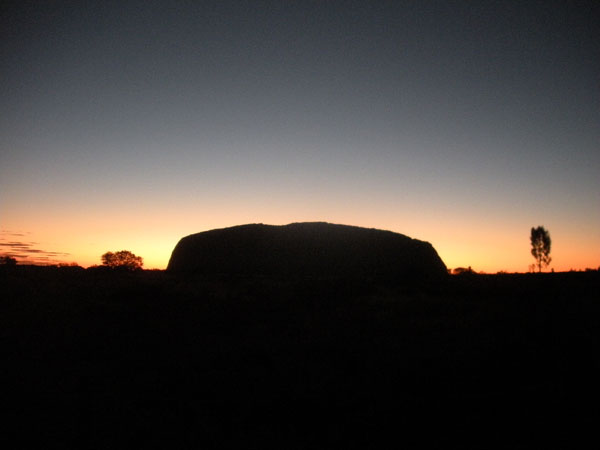
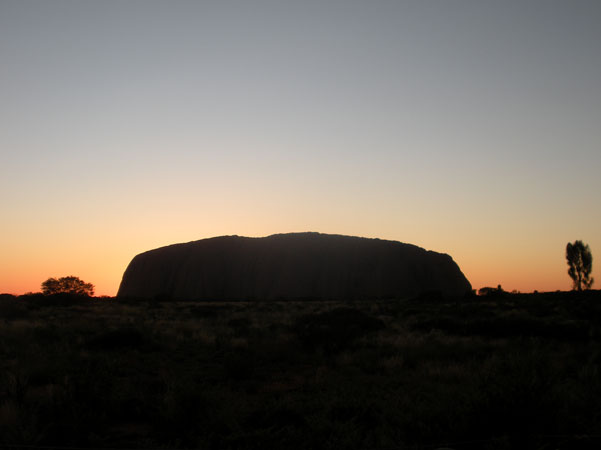
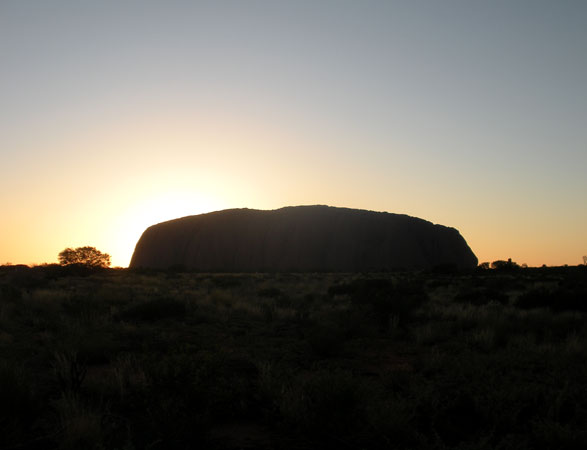
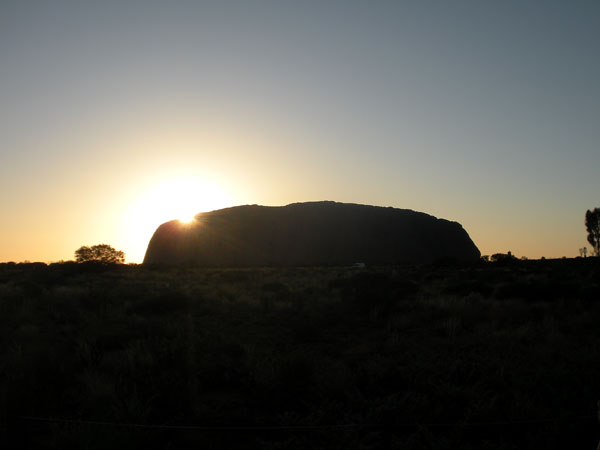
Immediately the flies swarmed out - Darn! Back on the bus, we rode to a spot near the base of Uluru to start our walk around the rock. At times we were quite close to the great red sloping sides of the slumbering beast. Walking around him, we became more fully aware of the massiveness, the striations and folds, the caves and pour overs, and the very deeply eroded gashes in the surface. Our walk was over nine kilometers, and definitely worth the exertion; but with the increasing heat of the day it's good to do it early!
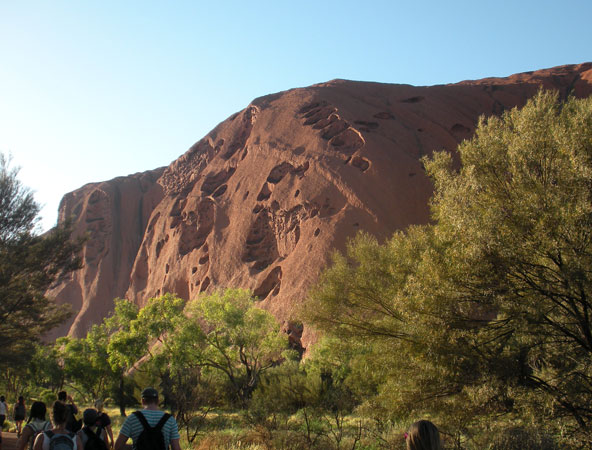
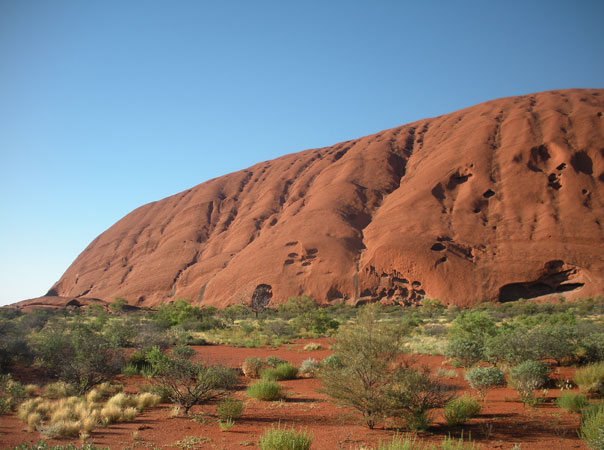
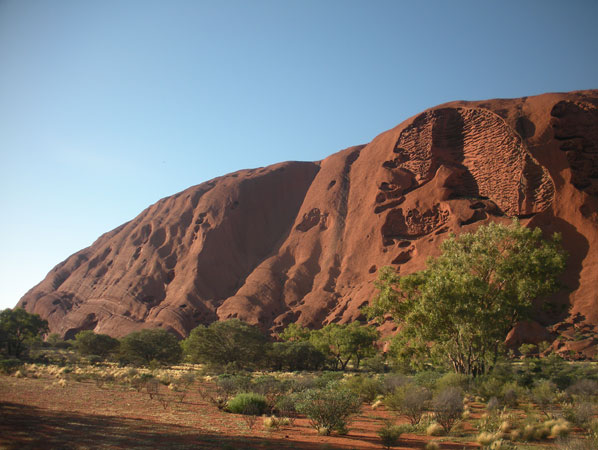
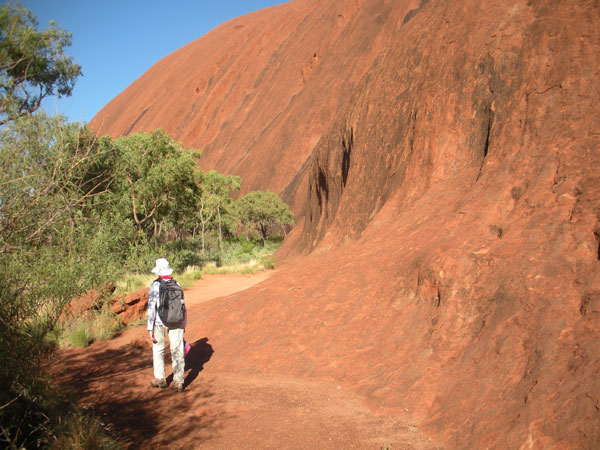
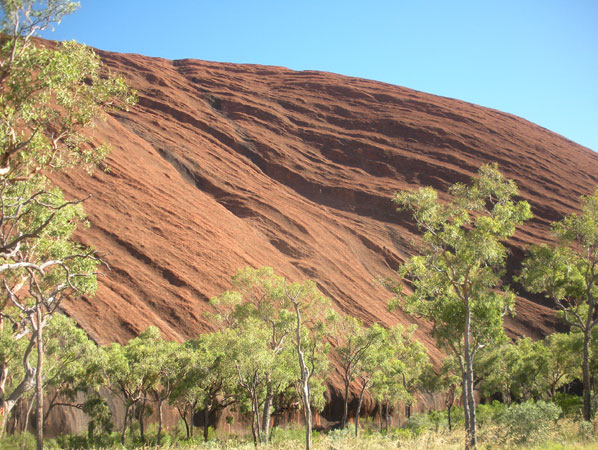
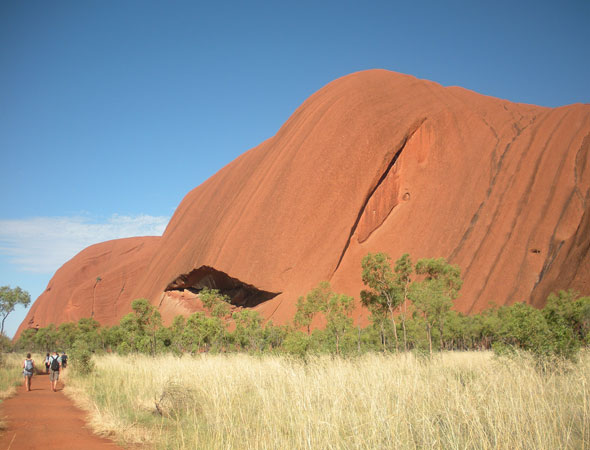
Back on the bus, we headed back to Alice Springs! We chatted, napped, sang along to the music, watched the pygmy forested, grasslanded landscape roll by, and drank the remaining beers. At Curtin Springs, we stopped at a shady grass park for lunch (not sure where they get the water to keep it green).

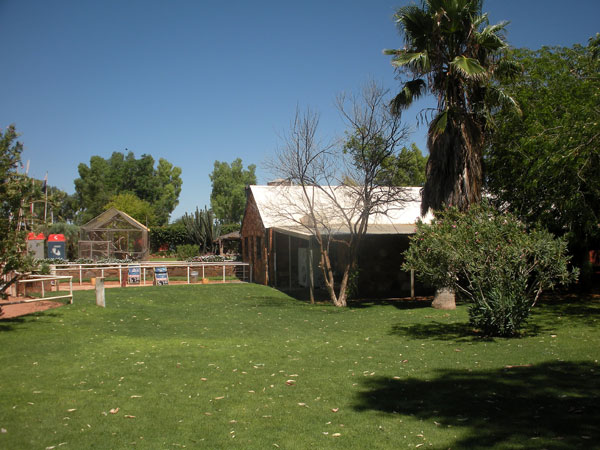
At a camel ranch, we stopped while a few folks went for camel rides (we declined). We did meet a couple of kangaroos.
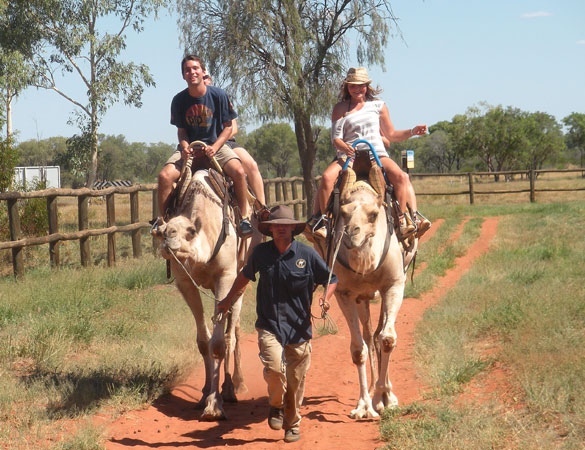
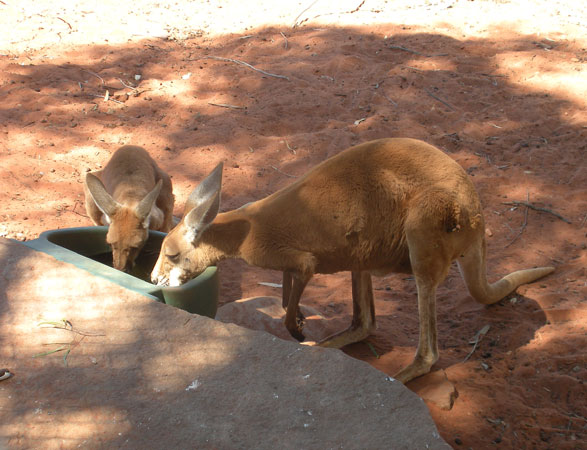
Late afternoon, we pulled into Alice Springs, happy to be back to the relative civilization of this frontier town. In the evening, after showers, we all gathered for a dinner together. Sam looked sharp in civilian clothes and our 'family members' all looked young, clean and civilized. We felt privileged to have been part of this family of youthful adventurers.
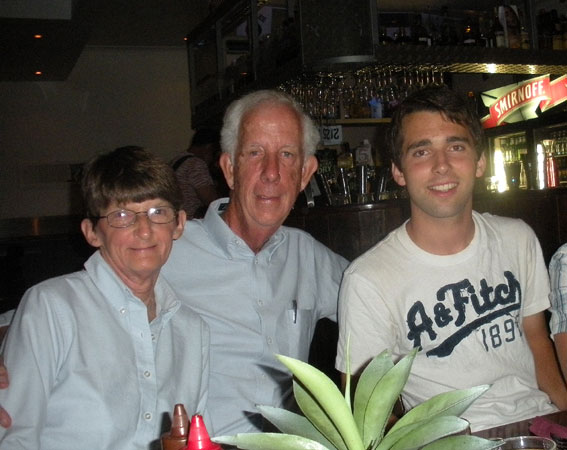
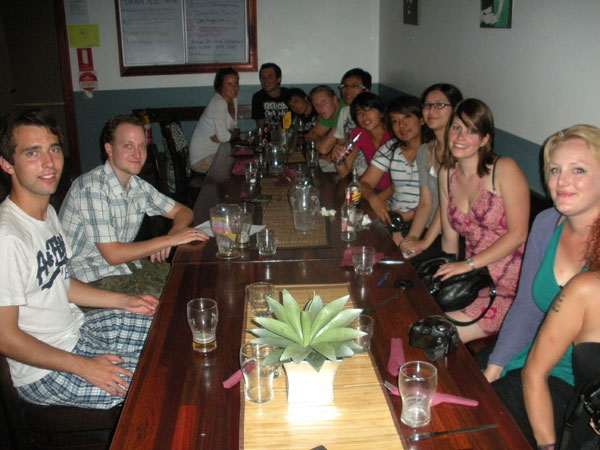
More important we were happy to have survived the rigors of camping in the Outback, and to have made our pilgrimage to Uluru, the great, red sleeping giant, spiritual place, and Australian icon.
Click here to return to our 'Winter 2010/11 - 'Down Under in Australia and New Zealand' page
![]()